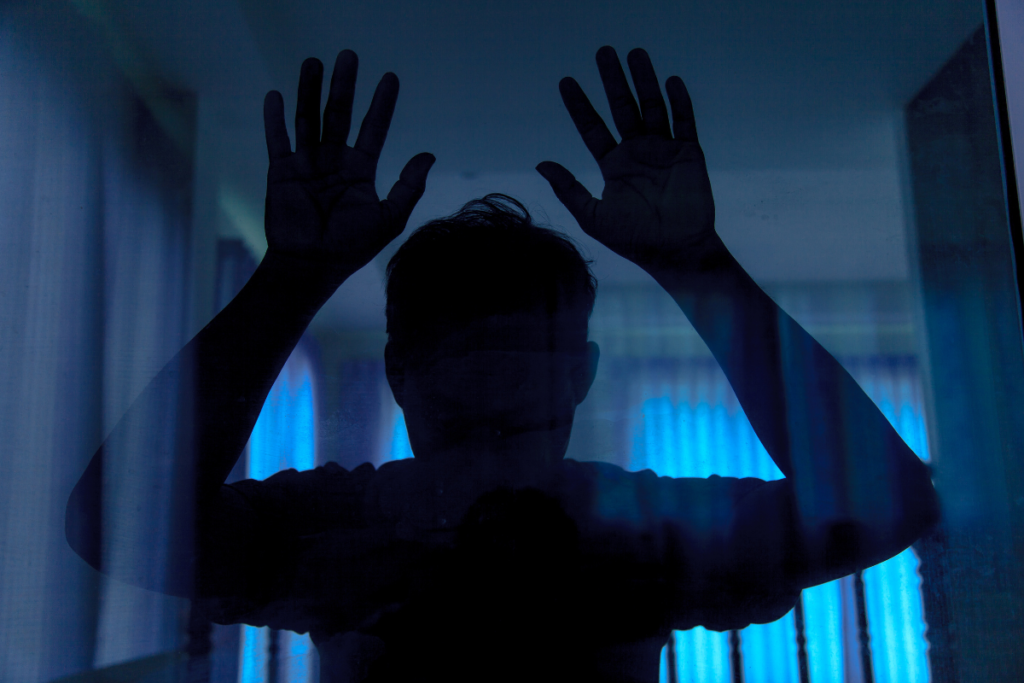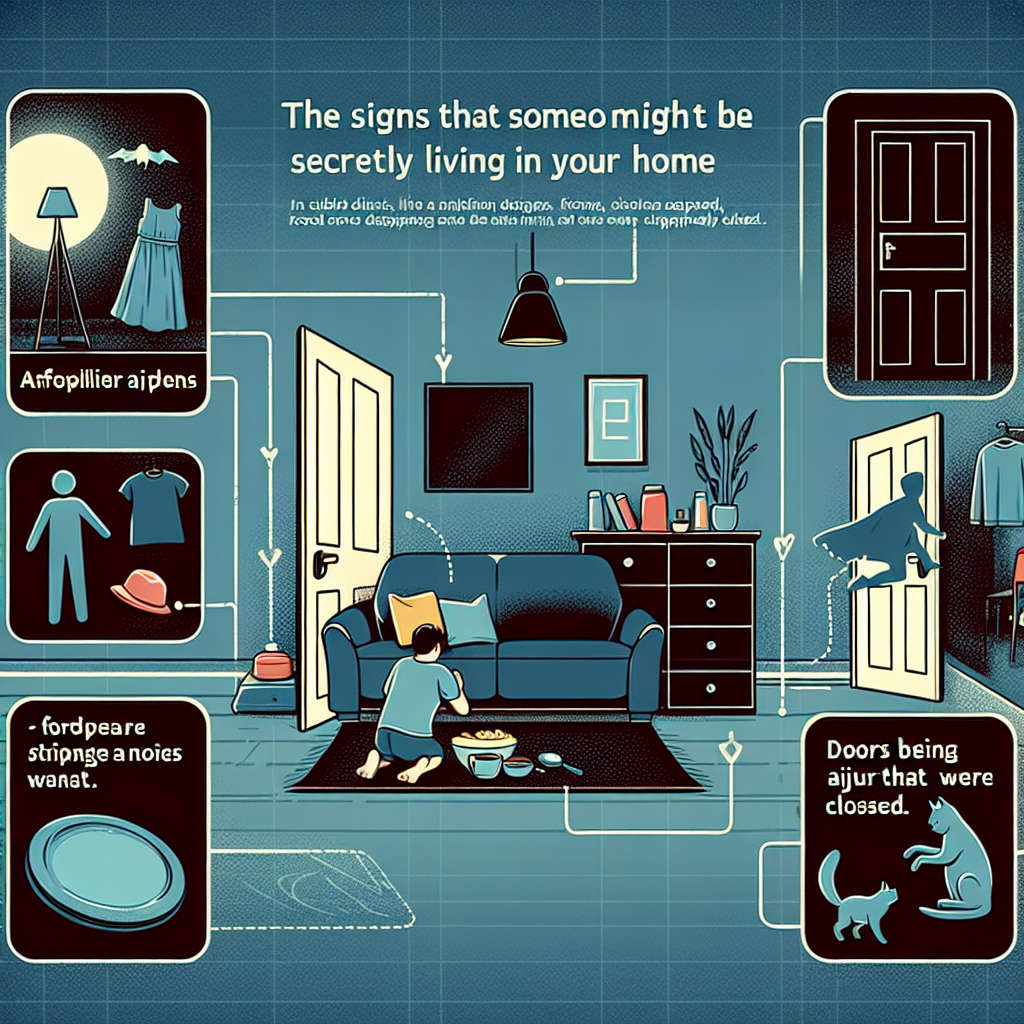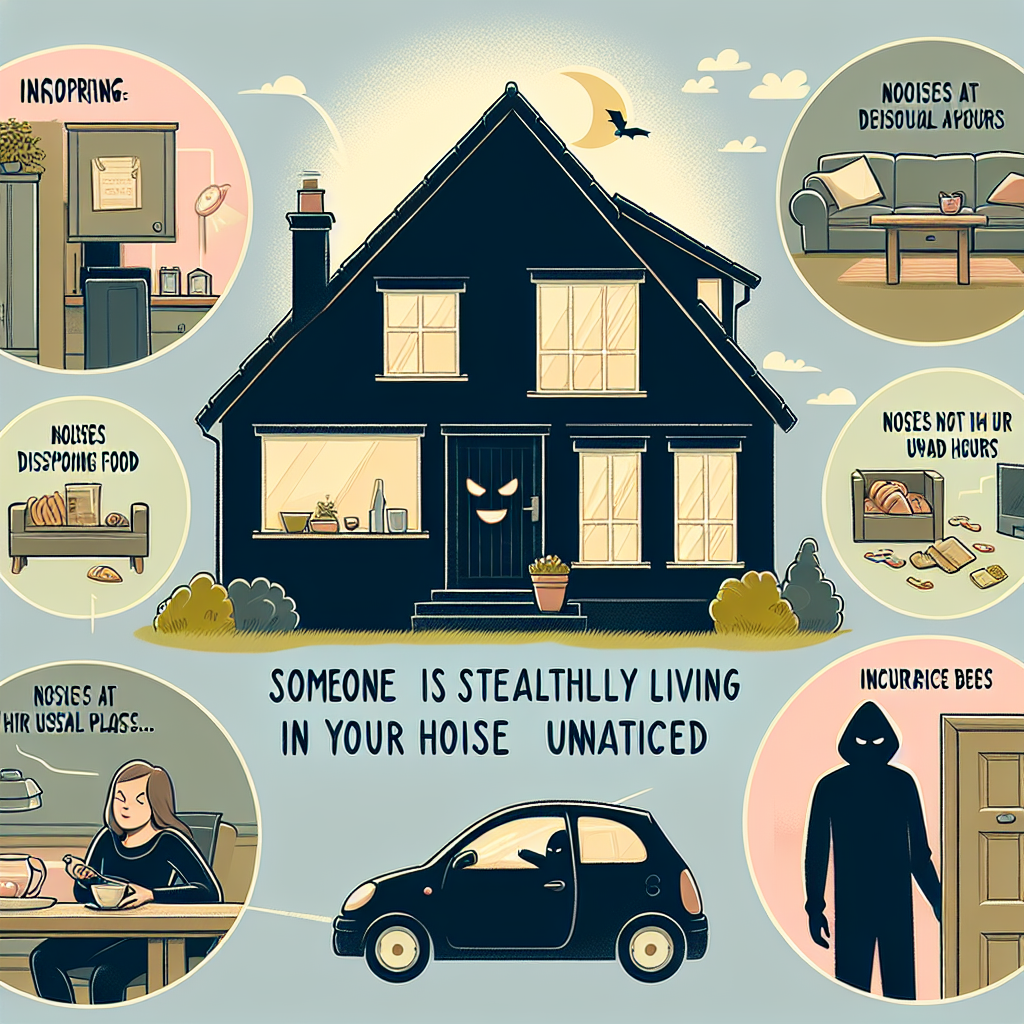Have you ever felt like someone was in your house when you knew you were alone? Or maybe you’ve noticed your favorite snacks disappearing faster than usual? If so, you might be dealing with a super creepy problem called “phrogging.”
Phrogging is when someone secretly lives in your house without you knowing. Crazy, right? These sneaky intruders, called “phroggers,” hide in places you don’t often check, like attics or spare rooms. They come out when you’re not around or when you’re fast asleep. It’s like having a real-life boogeyman in your home!
This weird home invasion trick has been making news lately, with some wild stories popping up all over. It’s enough to make anyone double-check their closets before bed!
But don’t freak out just yet! In this article, we’re going to be like detectives and learn how to spot the signs that a phrogger might be crashing at your place. We’ll look at weird noises, missing stuff, and other clues that something’s not quite right in your home.
By the time you finish reading, you’ll know all the tricks to keep your home phrogger-free. So, let’s dive in and learn how to catch these unwanted houseguests before they can say “ribbit”!
How To Tell If Someone Is phrogging Your Home
phrogging, a term that has recently gained traction, refers to the unsettling phenomenon of unauthorized occupants secretly living in someone else’s home. This can happen in various ways, from squatting to more insidious forms of invasion where hidden intruders make themselves at home without the owner’s knowledge. Understanding how to identify the signs of phrogging is crucial for property protection and tenant safety. In this article, we will explore the signs of phrogging, preventive measures, and the responsibilities of landlords in ensuring a secure living environment.
What is phrogging?
phrogging is derived from the word “frog,” which implies jumping from one place to another. In this context, it refers to individuals who “jump” into someone else’s home without permission. This can occur in various forms, including:
- Squatting: Individuals taking up residence in a property without legal rights.
- hidden intruders: People who may have access to a home (like former tenants or acquaintances) and choose to stay without the owner’s consent.
- secret inhabitants: Those who may have been invited in but refuse to leave, effectively becoming unauthorized occupants.
Understanding the nuances of phrogging is essential for homeowners and landlords alike, as it can lead to significant safety and legal issues.
Signs That Someone Might Be phrogging Your Home
Detecting hidden intruders can be challenging, especially if they are skilled at covering their tracks. Here are some common signs that may indicate someone is phrogging your home:
1. Unexplained Changes in Your Home
If you notice changes in your home that you did not make, it could be a sign of unauthorized occupants. Look for:
- Moved Items: Furniture or personal belongings that have been rearranged.
- Missing Items: Valuables or everyday items that seem to have disappeared.
- Strange Odors: Unfamiliar smells that could indicate someone else is living in your space.
2. Unusual Sounds
Pay attention to sounds that seem out of place. This could include:
- Footsteps: Hearing footsteps when you are alone in the house.
- Voices: Conversations or laughter that you cannot attribute to anyone you know.
- Doors Opening/Closing: Sounds of doors operating when you are certain you are the only one home.
3. Increased Utility Bills
A sudden spike in your utility bills can be a red flag. If someone is living in your home without your knowledge, they may be using electricity, water, and gas, leading to higher costs. Keep an eye on:
- Electricity Usage: Unexplained increases in your electric bill.
- Water Consumption: Higher water bills without a corresponding increase in your usage.
4. Security System Alerts
If you have a security system installed, pay attention to any alerts or notifications. Signs to watch for include:
- Motion Detected: Alerts indicating movement in areas of your home where no one should be.
- Door/Window Sensors: Notifications that doors or windows have been opened unexpectedly.
5. Unfamiliar Items or Trash
Finding items that do not belong to you can be a clear indicator of phrogging. Look for:
- Personal Belongings: Clothing, toiletries, or other personal items that are not yours.
- Trash: Unfamiliar garbage or food wrappers that suggest someone else has been living in your space.

Protect Your Home: Combat Phrogging and Hidden Intruders Effectively
Preventive Measures for Home security
To protect your home from phrogging and ensure tenant safety, consider implementing the following Home security measures:
1. Install security systems
Investing in a comprehensive security system can deter unauthorized occupants and provide peace of mind. Key features to consider include:
- alarm systems: Alerts for unauthorized entry.
- Cameras: Surveillance cameras can monitor activity around your property.
- Smart Locks: Keyless entry systems that can be controlled remotely.
2. Regularly Inspect Your Property
Conduct regular inspections of your home, especially if you are away for extended periods. Look for:
- Signs of Forced Entry: Check doors and windows for signs of tampering.
- Unusual Activity: Monitor for any signs of unauthorized access.
3. Maintain Good Relationships with Neighbors
Having a good rapport with your neighbors can be invaluable. They can help keep an eye on your property and report any suspicious activity. Consider:
- Neighborhood Watch Programs: Joining or forming a local watch group.
- Regular Communication: Keeping in touch with neighbors about any concerns.
4. Secure Entry Points
Ensure all entry points to your home are secure. This includes:
- Reinforcing Doors and Windows: Use deadbolts and window locks.
- Installing Motion Sensor Lights: Bright lights can deter potential intruders.
What to Do If You Suspect phrogging
If you suspect that someone is phrogging your home, it’s essential to take action promptly. Here are steps to follow:
1. Gather Evidence
Before taking any action, document any signs of phrogging. This can include:
- Photographs: Take pictures of any unusual items or changes in your home.
- Notes: Keep a log of any strange sounds or occurrences.
2. Contact Authorities
If you have substantial evidence or feel unsafe, do not hesitate to contact local law enforcement. They can assist in assessing the situation and taking appropriate action.
3. Change Locks
If you believe someone has gained unauthorized access, consider changing your locks immediately. This can prevent further intrusion and enhance your Home security.
4. Consult a Legal Professional
If you find that someone is living in your home without permission, it may be necessary to consult a legal professional. They can guide you through the process of eviction or other legal actions.
landlord responsibilities in Preventing phrogging
For landlords, ensuring tenant safety and property protection is paramount. Here are some responsibilities landlords should uphold:
1. Conduct Regular Inspections
Landlords should perform regular inspections of their properties to ensure that no unauthorized occupants are living there. This includes:
- Scheduled Visits: Regularly scheduled visits to check on the property.
- Tenant Communication: Keeping open lines of communication with tenants about any concerns.
2. Maintain Security Features
Landlords should invest in security systems and ensure that all security features are functioning correctly. This includes:
- alarm systems: Regularly testing alarm systems to ensure they are operational.
- Lighting: Ensuring that outdoor lighting is adequate to deter intruders.
3. Provide Clear Lease Agreements
A well-defined lease agreement can help prevent misunderstandings regarding occupancy. Key elements to include are:
- Occupancy Limits: Clearly stating how many people can reside in the property.
- Subletting Policies: Outlining rules regarding subletting or unauthorized occupants.
4. Respond to Tenant Concerns
Landlords should take tenant concerns seriously and respond promptly to any reports of suspicious activity. This can help build trust and ensure a safe living environment.
Conclusion
Alright, junior detectives, now you’re armed with all the cool tricks to spot a phrogger! Let’s wrap this up with some key things to remember:
First off, trust your gut! If something feels off in your home, it probably is.
Don’t ignore those weird noises or that creepy feeling – your instincts might be trying to tell you something important.
Remember, being observant is your superpower.
Keep an eye out for those sneaky signs we talked about, like missing snacks, strange objects appearing out of nowhere, or your pet acting like it’s seen a ghost. If you think there might be a phrogger in your house, don’t try to be a hero!
Tell a trusted adult right away. They can help you contact the police and make sure everyone stays safe. The best way to deal with phroggers? Stop them before they even think about moving in! Make sure all your doors and windows are locked tight, and don’t share too much about your home on social media. It’s like putting up an invisible force field around your house! Lastly, remember that your home should be your safe space. You have the right to feel comfortable and secure in your own house. By staying alert and taking smart precautions, you can make sure your home stays phrogger-free.
So, keep those eyes peeled, ears open, and don’t let any uninvited guests crash at your place. Stay safe out there, and happy phrogger hunting!

Notice: Trying to get property 'term_id' of non-object in /home/pauliakas/domains/thetabletzone.com/public_html/wp-content/themes/flex-mag/functions.php on line 999
